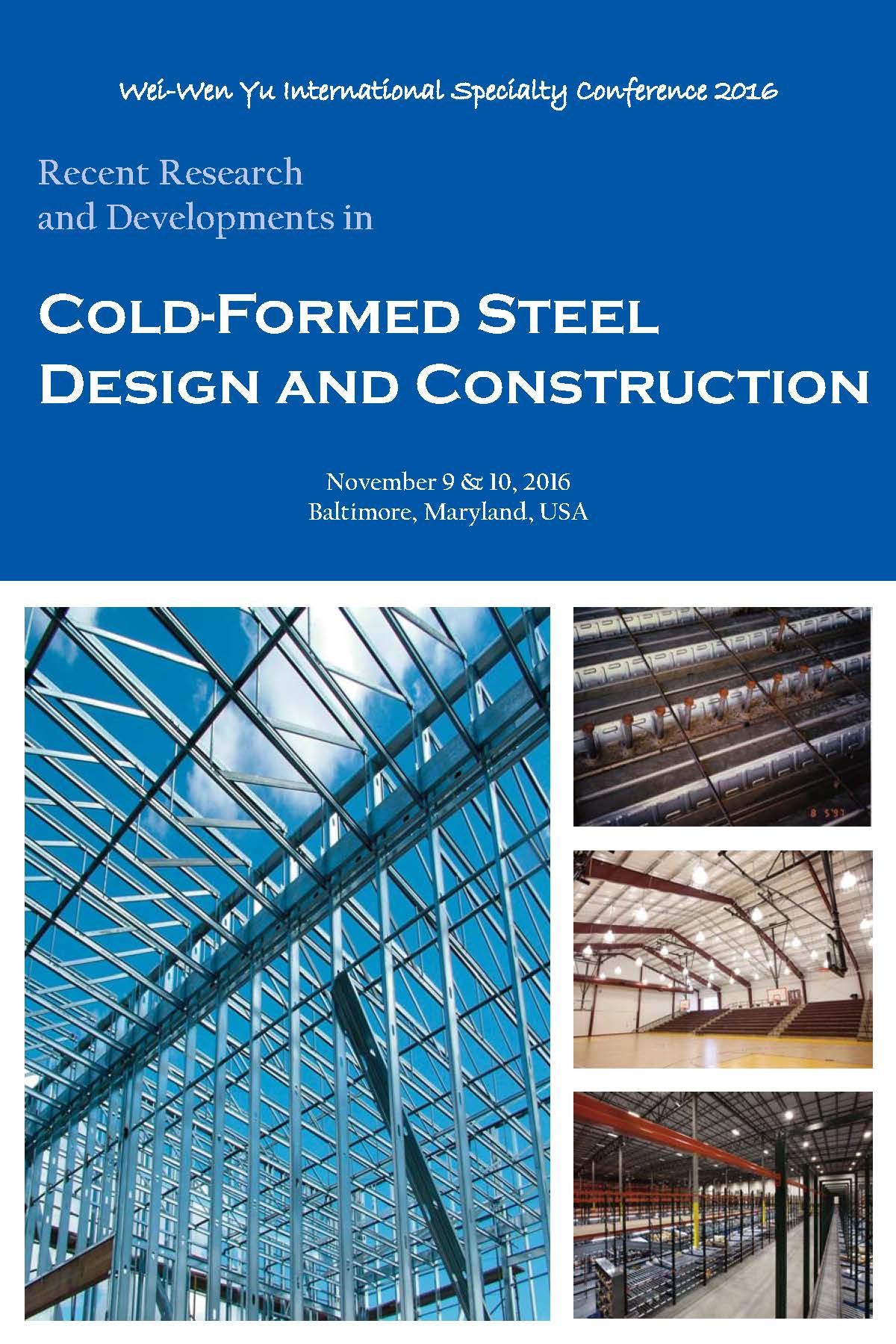Session Dates
09 Nov 2016
Abstract
This paper is focused on optimising the cross-sectional shapes of simply-supported, singly-symmetric and open-section cold-formed steel (CFS) beams and beam-columns without manufacturing or assembly constraints. A previously developed Genetic Algorithm (GA) is used in this study. Fully restrained and unrestrained beams against lateral deflection and twist, as well as unrestrained beam-columns are optimised, of which the nominal member capacities are determined by the Direct Strength Method (DSM). The optimised cross-sectional shapes are presented and the evolution of the unrestrained cross-sectional shapes for various combinations of axial load and bending moment is analysed and discussed.
Department(s)
Civil, Architectural and Environmental Engineering
Research Center/Lab(s)
Wei-Wen Yu Center for Cold-Formed Steel Structures
Meeting Name
International Specialty Conference on Cold-Formed Steel Structures 2016
Publisher
Missouri University of Science and Technology
Document Version
Final Version
Rights
© 2016 Missouri University of Science and Technology, All rights reserved.
Document Type
Article - Conference proceedings
File Type
text
Language
English
Recommended Citation
Wang, Bin; Gilbert, Benoit P.; Bosco, Guillaume L.; Guan, Hong; and Teh, Lip H., "Unconstrained Cross-Sectional Shape Optimisation of Cold-Formed Steel Beams and Beam-Columns" (2016). CCFSS Proceedings of International Specialty Conference on Cold-Formed Steel Structures (1971 - 2018). 7.
https://scholarsmine.mst.edu/isccss/23iccfss/session3/7
Unconstrained Cross-Sectional Shape Optimisation of Cold-Formed Steel Beams and Beam-Columns
This paper is focused on optimising the cross-sectional shapes of simply-supported, singly-symmetric and open-section cold-formed steel (CFS) beams and beam-columns without manufacturing or assembly constraints. A previously developed Genetic Algorithm (GA) is used in this study. Fully restrained and unrestrained beams against lateral deflection and twist, as well as unrestrained beam-columns are optimised, of which the nominal member capacities are determined by the Direct Strength Method (DSM). The optimised cross-sectional shapes are presented and the evolution of the unrestrained cross-sectional shapes for various combinations of axial load and bending moment is analysed and discussed.




